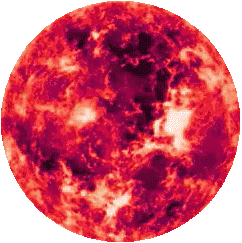
Barnard's Star System
The Barnard's Star System contains 1 Star and 4 Planets.
0 Planets are habitable candidates
The Barnard's Star System is located within near the inner rim of the Orion Arm, within the Local Fluff of the Local Bubble, between the Radcliffe wave and Split linear structures (formerly Gould Belt) in the Milky Way Galaxy, which is 26,000 light years away from the massive Sagittarius black hole at the center of the Galaxy.
/ Star & Planets / Stars & Planets List 0 to 20 Light Years / Barnard's Star System
35.054 Trillion Miles
5.9630 Light Years
1.8282 Parsecs
Barnard's Star

M4V Class Red Dwarf
5,182 F Photosphere
Moderate Flares
Barnard I
0.0188 AU
Tidally Locked
0.263 (EM)
Sub Terran
? Miles
? Density
? g
Atmosphere ?
Hot
Life?
Main Sequence
10.01 Billion Years Old
Population II Star
Heavy Element Poor
Barnard II
0.0229 AU
Tidally Locked
0.299 (EM)
Sub Terran
? Miles
? Density
? g
Atmosphere ?
Hot
Life ?
Barnard III
0.0274 AU
Tidally Locked
0.335 (EM)
Sub Terran
? Miles
? Density
? g
Atmosphere ?
Hot
Life ?
Barnard IV
0.0381 AU
Tidally Locked
0.193 (EM)
Sub Terran
? Miles
? Density
? g
Atmosphere ?
Hot
Life ?
1 AU = 92,955,807 Miles
Chemical Rocket Travel Time
77,377 Earth Years
Fission Rocket Travel Time
120 Earth Years
Fusion Rocket Travel Time
60 Earth Years
Laser Light Sail Travel Time
30 Earth Years
Barnard Star Planets Probability to Host Life
It is unlikely that any of the planets in the Barnard Star system could support life as we know it. Each planet orbits very close to its star, making them too hot for liquid water on their surface, a key requirement for life as we know it. While the planets orbiting Barnard Star are not promising for life as we know it, there's always the possibility of life existing in forms we haven't encountered before.

Join the Exo Solaria Union
Help aid in UAP research, Stay informed on the UAP phenomenon, and to help push the United States government for full disclosure regarding UAP and alien species.
